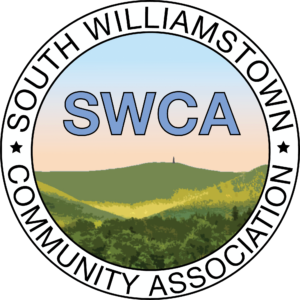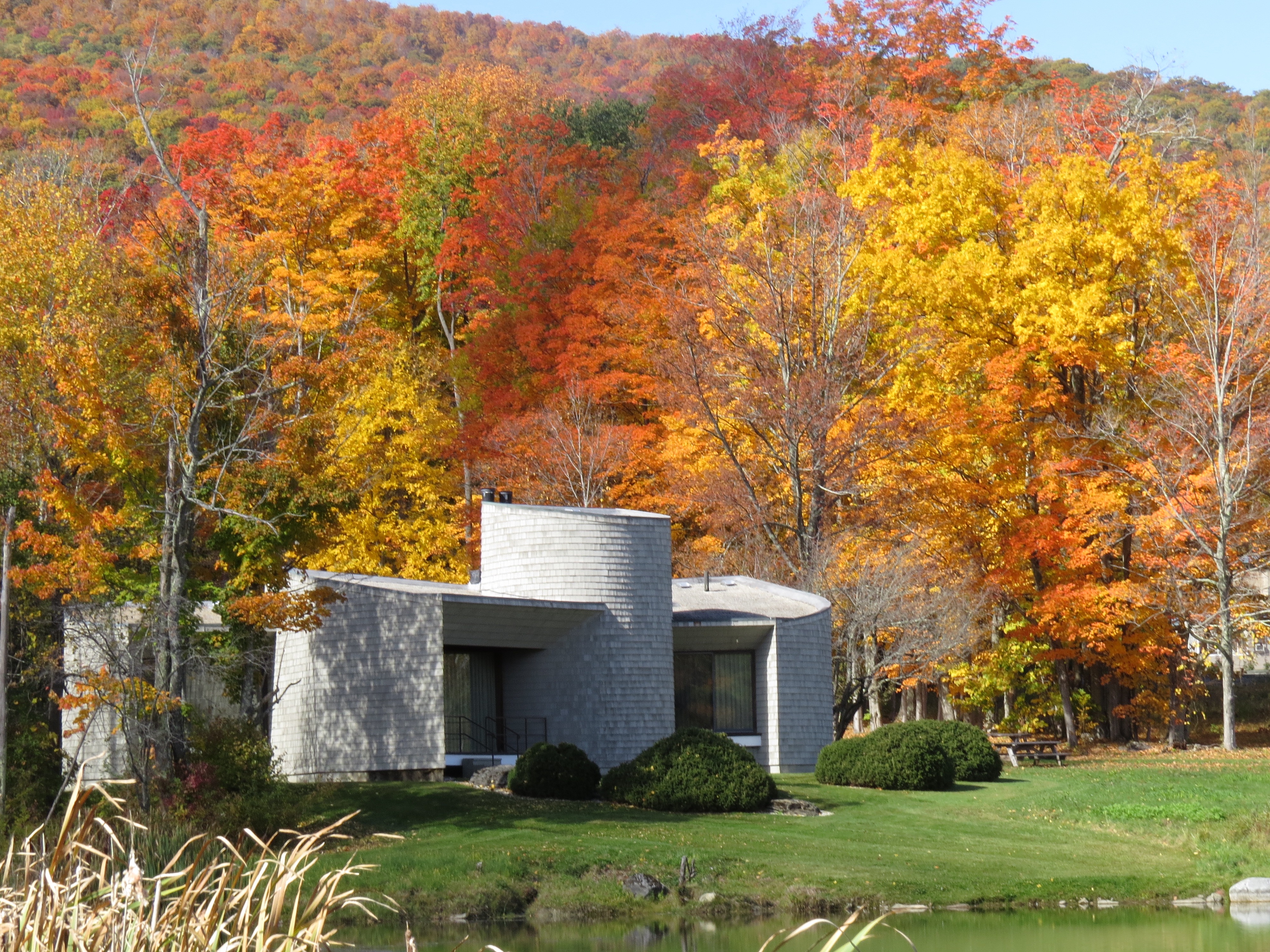Field Farm, an expanse of lush hayfields, lovely forests, meadows, pond and marshes, lies on a level stretch of land at the western edge of the valley just below the foothills of the Taconic Range. At present 300+ acres of land, the original parcel of 254 acres of farm and forest land has persisted through more than 200 years as an entity, never broken up.
 Now it is owned and managed for public enjoyment, farming and preservation of two unusual houses, by The Trustees of Reservations, a statewide conservation organization.
Now it is owned and managed for public enjoyment, farming and preservation of two unusual houses, by The Trustees of Reservations, a statewide conservation organization.
The original farm was assembled by Samuel Sloan, entrepreneur and land Field Farm, an expanse of lush hayfields, lovely forests, meadows, pond and marshes, lies on a level stretch of land at the western edge of the valley just below the foothills of the Taconic Range. At present 300+ acres of land, the original parcel of 254 acres of farm and forest land has persisted through more than 200 years as an entity, never broken up.
Now it is owned and managed for public enjoyment, farming and preservation of two unusual houses, by The Trustees of Reservations, a statewide conservation organization.
The original farm was assembled by Samuel Sloan, entrepreneur and land speculator, from four lots from the second division of woodlots laid out by The Proprietors in the 1760s and 1770s. It included 500 acres then. He sold it in 1806. Sloan was the builder of the present Williams College President’s house. The farm was passed down through about six owners, one of whom was Nathan Field, whose name became the inspiration for the property’s name. There is little sign that anyone lived on the farm or had barns. There was a foundation, now filled in, in the Southeast corner of the northern half. Possibly it was used for pasture and hay crops by neighboring farmers.
By the mid-1900s, several of the owners had not done well and the farm was up for sale. My parents, Lawrence and Ele Bloedel, were interested in moving out from town, and I remember the three of us being dragged through thick brush by Sanborn Tenney, who was showing the property, so that we could see the most beautiful part from the best angle. This ploy worked and my parents bought the land in 1945 and completed the house in 1948. My father wanted it to be designed from the inside out, so rooms were arranged to get the best view and light. At first the house seemed a little bare, but soon he began to fill it with the modern American art he loved. My mother filled the garden and house with flowers.
A smaller building, a guest house, which might be reminiscent of Victorian Shingle Style, but with many more curves and angles, was constructed near the pond. The architect, Ulrich Franzen, had complete artistic freedom and created every element inside and out. With its reflection glimmering in the pond, it seemed like some of the follies of English landscape design, and so was christened The Folly. It is considered to be an outstanding example of contemporary architecture, and is open for tours in the summer.
The Trustees (TTOR), with a long and respected experience of preserving both land and outstanding houses, were chosen to be recipients of the property. This was their first acquisition of contemporary architecture.
Field Farm’s trails through field and forest, which lead to the mysterious “caves” and wind through drifts of spring flowers and big trees are open to the public. I hope you enjoy the sculpture in the gardens and the magnificent view of Mount Greylock and the surrounding mountains as much as I do.
by Pamela Weatherbee

